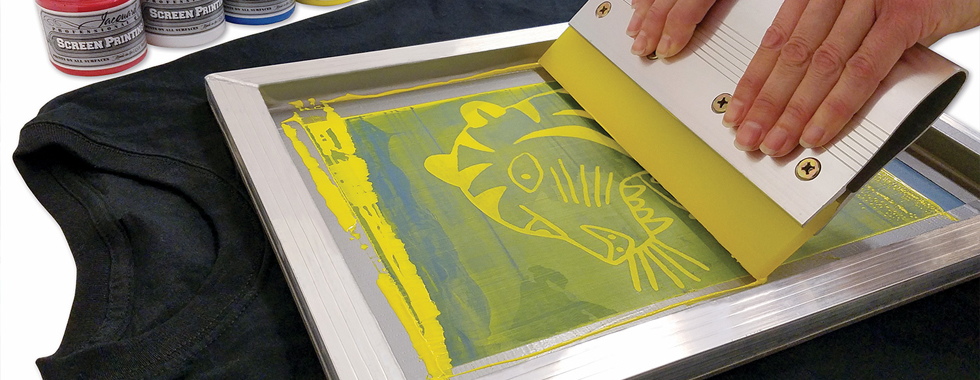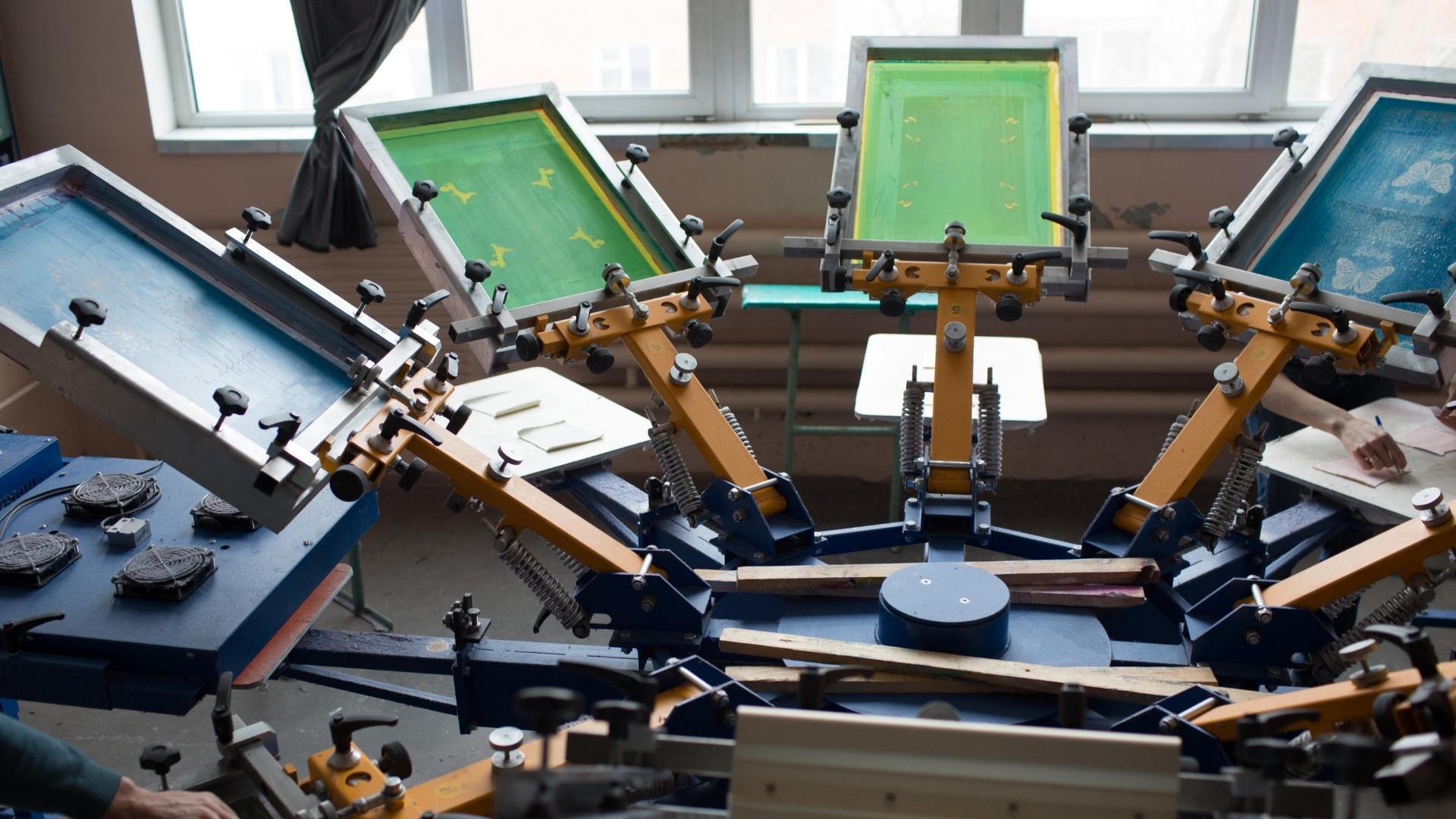ChatGPT said: Easy process to ordering with 10:9 Design Abilene
Wiki Article
The Essential Overview to Recognizing Screen Printing and Its Versatile Uses
Screen printing has a rich history that dates back to ancient times, evolving right into an innovative strategy used across various industries today. This overview discovers the details of the screen printing procedure, describing its applications in style, home, and advertising and marketing décor - 10:9 Design reviews. Recognizing these basics can open imaginative potential for both commercial and artistic tasks. The adhering to sections will expose essential pointers and strategies to improve one's screen printing venturesThe History of Screen Printing
Although screen printing has roots that trace back centuries, its evolution mirrors the technological and imaginative developments of various societies. Stemming in old China, the technique was at first used for enhancing textiles and later infect Japan, where it ended up being essential to Ukiyo-e woodblock printing. The approach changed to Europe in the 18th century, where it got popularity among craftsmens and commercial printers. The creation of image solution in the 20th century revolutionized screen printing, enabling for more intricate styles and higher performance. Artists like Andy Warhol additionally drove its popularity, using the tool to create legendary works that blended commercialism and fine art. By the late 20th century, screen printing had actually developed itself as a versatile technique, used in fashion, advertising and marketing, and fine art. Today, it continues to evolve, incorporating digital technology and expanding its applications across different industries.The Screen Printing Process Explained
Screen printing transforms imaginative visions into tangible designs through a series of specific actions. A photo is developed and then transferred onto a screen, normally made of great mesh material stretched over a framework. A light-sensitive solution is put on the screen, which is subjected to light, solidifying in areas not covered by the photo. After rinsing the unhardened emulsion, a stencil is created.Next, the screen is placed over the substrate, whether it be textile, paper, or another product. Ink is after that pressed through the open locations of the stencil utilizing a squeegee, transferring the design onto the substratum below. This process can be repeated for several colors, calling for separate displays for each and every shade. Lastly, the published item is healed making use of heat to ensure the ink sticks effectively, causing a durable, dynamic style prepared for usage.
Kinds of Screen Printing Techniques

Additionally, specialized strategies, such as discharge screen printing, eliminate color from the fabric to create softer prints, while aluminum foil screen printing uses metallic aluminum foil to achieve a glossy finish (10:9 Design contact). Each method uses unique features, dealing with numerous creative requirements and manufacturing scales, inevitably expanding the possibilities within the screen printing domain name
Applications of Screen Printing in Various Industries
Additionally, the signage and advertising and marketing sectors use screen printing for developing attractive display screens and banners. This method enables for vibrant shades and detailed designs that catch focus. In electronics, screen printing is used for using conductive inks to circuit boards, vital for element links. The home style market welcomes screen printing to produce unique designs on textiles and wall art. On the whole, screen printing serves as an essential tool throughout varied fields, boosting products with individualized and aesthetically appealing graphics.
Tips for Effective Screen Printing Projects
While embarking on a screen printing task, this page careful attention to detail can substantially enhance the last end result. Selecting high-grade materials is important; this consists of the screen, inks, and substrates. Utilizing suitable mesh counts can impact ink deposition and detail resolution. Prep work is similarly vital; comprehensive cleaning of screens and proper exposure times ensure crisp prints.Next off, precise enrollment is vital for multi-color prints. Making use of positioning devices can help achieve precise layering. In addition, testing prints on scrap materials prior to manufacturing aids determine potential issues without wasting sources.

Frequently Asked Questions
What Materials Are Finest for Screen Printing on Material?
Cotton and polyester blends are excellent for screen printing on material because of their toughness and ink absorption. Furthermore, specialized materials like silk or canvas can produce special appearances and finishes, improving the overall style high quality.How Do I Tidy and Maintain Screen Printing Tools?
To preserve and clean screen printing devices, one should regularly clean screens with suitable solvents, evaluate squeegees for wear, lubricate relocating components, and shop all things in more a dry, dust-free atmosphere to extend their life-span.What Are the Ecological Impacts of Screen Printing?
Screen printing can have significant environmental effects, including chemical waste from inks and solvents, water use during cleansing procedures, and power intake. Environmentally friendly materials and sustainable methods are necessary for minimizing these adverse impacts.Can Screen Printing Be Done at Home Efficiently?
Screen printing can be effectively done at home with the appropriate products and strategies. Enthusiasts can develop high quality prints, though success depends on their skill level, equipment, and understanding of the procedure entailed.
What Are the Prices Linked With Beginning a Display Printing Business?

Starting a screen printing company includes expenses for equipment, products, and work area. Initial expenditures generally range from a few hundred to numerous thousand dollars, depending on the range, quality of equipment, and desired production capability.
Screen printing has an abundant history that dates back to old times, developing right into a sophisticated strategy made use of throughout various sectors today. One more strategy, rotary screen printing, uses round displays, assisting in continuous printing on textile rolls, consequently boosting performance for large productions. In addition, specialty methods, such as discharge screen printing, remove dye from the textile to produce softer prints, while aluminum foil screen printing applies metal aluminum foil to accomplish a glossy finish. In the style sector, screen printing is widely used to create vivid layouts on clothing, allowing brands to showcase their special designs. Cotton and polyester blends are optimal for screen printing on material due to their longevity and ink absorption.
Report this wiki page